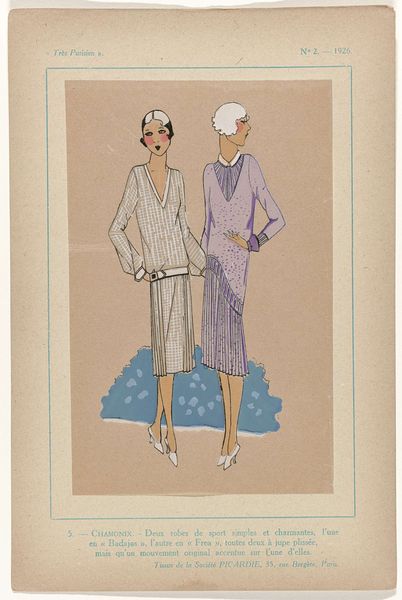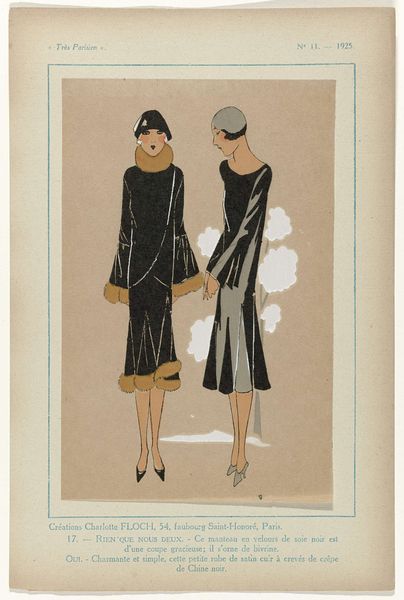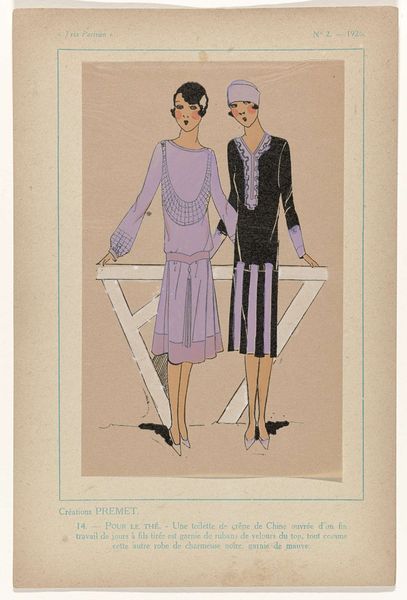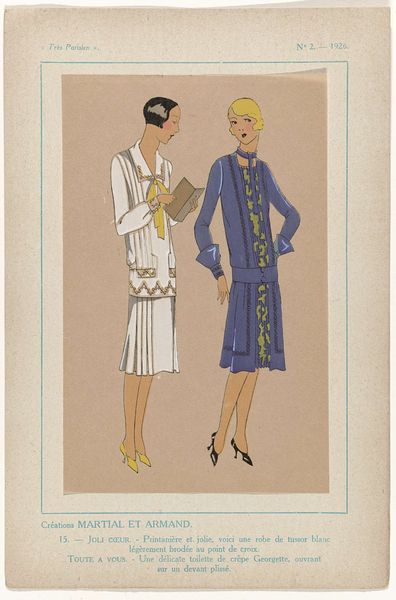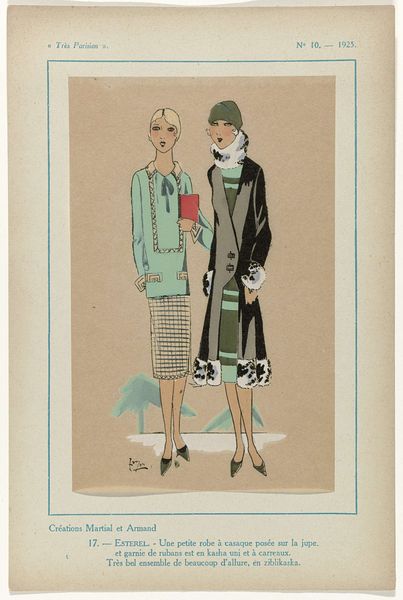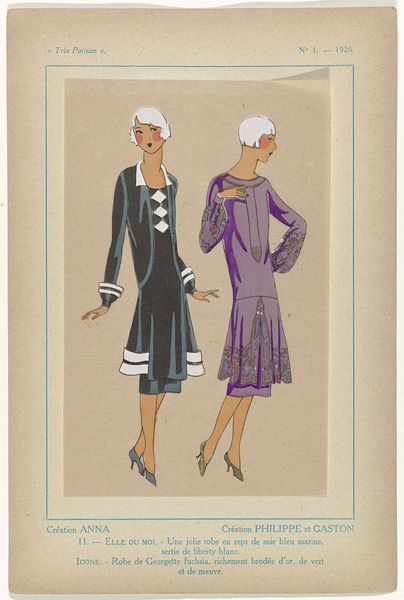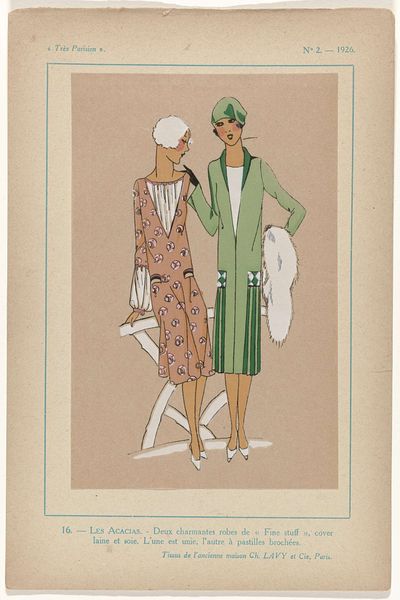
drawing, print, paper
#
art-deco
#
drawing
# print
#
paper
#
dress
Dimensions: height 270 mm, width 180 mm
Copyright: Rijks Museum: Open Domain
Editor: So this print, "Très Parisien, 1925, No. 5 : Créations Cheruit", is currently housed in the Rijksmuseum. It seems to depict fashion designs of the time. What strikes me is the combination of graphic lines and the almost subdued color palette. What do you see in this work, thinking about it from your perspective? Curator: From a materialist viewpoint, this image becomes fascinating. It's not just about the *look* of the dresses, but about the very labor and processes involved in their creation and consumption. The text below specifies the materials - "crêpe de Chine blanc" and "mousseline de soie". These weren't simply fabrics, they were signifiers of class and aspiration in the roaring twenties. Editor: So the materials tell a story of their own? Curator: Exactly! Consider the means of production for these textiles. Who was making them? What were their working conditions? These details, though absent in the image itself, are crucial to understanding its social context. This print served to promote both Cheruit’s design house, led by Madame Wormser, and a particular lifestyle. And it uses paper and print, which enables access for a greater audience than an original bespoke piece, even if they could only afford a glimpse in print. Editor: It’s interesting to think about how the image, as a print, participates in this whole cycle of production and desire. I hadn't considered the labour involved. Curator: The act of depicting fashion is also work, an artistic labour – where do you think this intersects with ideas around commercialism and 'high art'? Editor: Well, now I see it as much more than just a pretty picture! The focus on materials and means of production opens up questions about labor, class, and the consumption of luxury. I might actually focus on this intersection of artistry, material accessibility via printing and commercial appeal. Curator: Precisely! It's about understanding art's connection to a broader system. Focusing on paper and printing locates the work not just within design or fine art traditions, but considers its social role as a printed advertisement for commercial purposes.
Comments
No comments
Be the first to comment and join the conversation on the ultimate creative platform.
